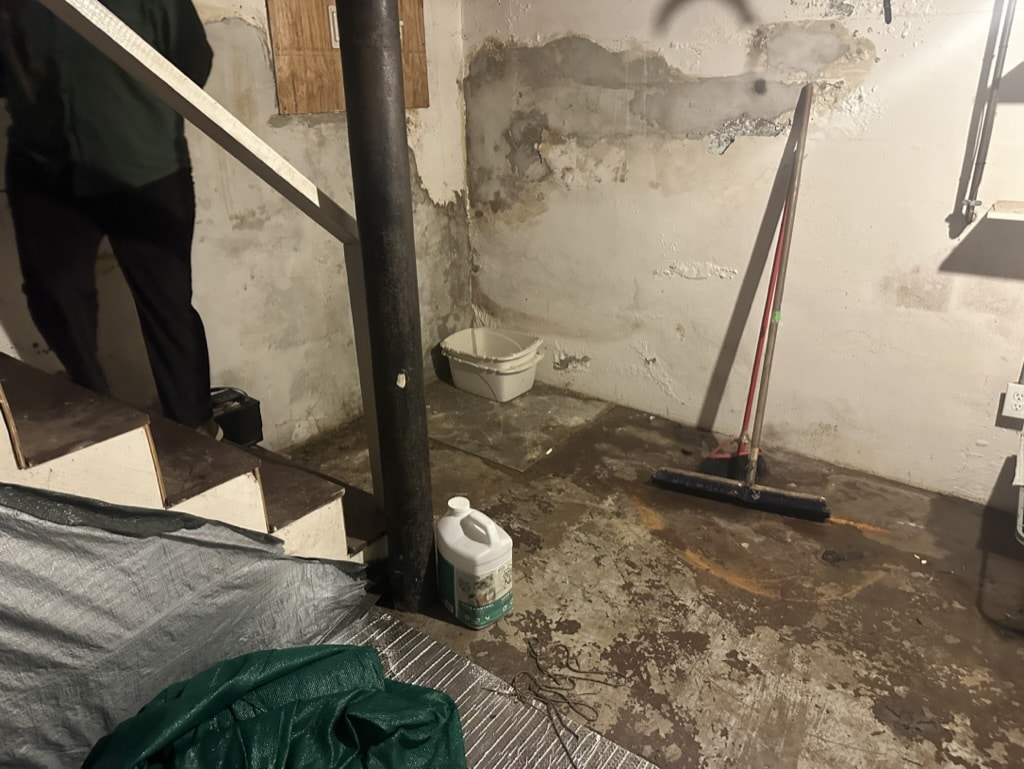
When homeowners think of foundation problems, they often blame weather, poor drainage, or aging materials. But one of the most overlooked and preventable causes of foundation failure is poor soil compaction.
Proper compaction of the soil beneath and around a home’s foundation is critical. If the soil is loose, uneven, or poorly prepared during construction, the foundation above it will eventually shift, settle, or crack. Over time, what started as a small oversight during site prep can lead to thousands of dollars in structural damage.
In this article, we’ll explore how poor soil compaction happens, what it does to your foundation, and how to detect and fix related issues before they threaten your home’s stability.
🔑 Key Takeaways
- Poorly compacted soil can’t support the weight of a foundation consistently.
- It leads to settlement, cracks, uneven floors, and structural instability.
- Causes include rushed construction, improper fill placement, or erosion.
- Detection involves identifying signs of differential settlement or voids.
- Solutions include soil stabilization, pier systems, and proper drainage planning.
What Is Soil Compaction?
Soil compaction is the process of increasing soil density by reducing the spaces between soil particles. This is done before foundation construction to ensure the soil can support the weight of the building without shifting or compressing under load.
Compacted soil provides a stable, uniform base for foundations. Loose or “fluffy” soil, on the other hand, compresses easily under pressure, which can lead to uneven settling and foundation damage.
How Poor Compaction Happens
1. Inadequate Site Preparation
If builders don’t properly clear, grade, or compact the site before pouring the foundation, soil inconsistencies may cause future instability.
2. Using Loose Fill Soil
When trenches or voids are filled with loose soil instead of compacted layers, those areas may compress more than the surrounding soil once the home is built.
3. Water Intrusion or Erosion
Heavy rains or poor drainage after construction can erode compacted soil, recreating loose zones beneath or around the foundation.
4. Rushed Construction
In fast-paced building environments, compaction steps may be skipped or poorly executed to save time.
What Happens When Soil Isn’t Compacted Correctly?
Differential Settlement
Some areas of the foundation settle more than others, causing stress on the structure and leading to cracks, sloping floors, or gaps.
Cracks in Foundation Walls and Slabs
As support shifts unevenly, tension builds in the concrete, creating vertical, diagonal, or stair-step cracks.
Uneven Floors and Wall Separation
Floors begin to slope or feel “bouncy,” while walls may pull away from ceilings or other structural components.
Plumbing Damage
Foundation movement can damage underground pipes or disrupt plumbing lines embedded in slabs.
Warning Signs of Compaction-Related Foundation Failure
| Sign | What It Suggests |
|---|---|
| Cracks in walls, ceilings, or floors | Differential settlement from shifting soil. |
| Sloping or bouncy floors | Uneven support beneath the flooring. |
| Gaps between doors/windows and frames | Structural misalignment from movement. |
| Sticking doors and windows | Frame distortion due to foundation shift. |
| Cracks in the brick or block exterior | Soil compression is causing movement underneath. |
These signs may appear months or even years after construction, making early detection and maintenance essential.
How Professionals Diagnose Compaction Problems
Foundation Inspection
A licensed foundation specialist will look for signs of movement, including crack patterns, elevation changes, and structural distortion.
Elevation Survey
Laser leveling tools or digital measuring equipment detect subtle changes in floor elevation that indicate settling or sagging.
Soil Testing
Geotechnical engineers can evaluate the density and composition of your soil to determine if poor compaction is contributing to instability.
Ground-Penetrating Radar or Core Sampling
These methods detect voids, air pockets, or inconsistencies in soil density beneath slabs or foundations.
Repair Solutions for Poorly Compacted Soil
Helical or Push Piers
- How they work: Steel piers are driven deep into stable soil or bedrock to transfer the foundation load off the weak, compressible soil.
- Best for: Homes with moderate to severe settlement.
Slabjacking (Mudjacking)
- How it works: A cement or polyurethane mixture is pumped beneath the slab to fill voids and lift sunken areas.
- Best for: Sinking interior slabs like basements or garages.
Compaction Grouting
- How it works: A thick grout is injected into the ground to compress and stabilize loose soil beneath the foundation.
- Best for: Localized voids or weak soil zones.
Drainage Improvements
Poor water control can wash away soil or add excess moisture. Adding French drains, regrading, and downspout extensions helps prevent further erosion and soil softening.
Can This Be Prevented?
Yes — especially during the construction phase.
For New Builds:
- Work with builders who follow proper site prep and soil compaction procedures.
- Request soil testing before construction begins.
- Ensure that fill soil is compacted in layers, not dumped all at once.
For Existing Homes:
- Monitor for signs of foundation movement, especially if your home is built on fill soil.
- Maintain proper grading and drainage.
- Avoid overwatering landscaping near the foundation.
Real-Life Example: A Case of Shifting Support
A homeowner in Roanoke, VA, noticed their recently purchased home had sloping floors and cracks in the drywall just six months after moving in. The home had been built on fill soil in a new development.
Seal-Tite’s inspection revealed that the fill soil beneath one corner of the foundation had been inadequately compacted. As a result, that portion of the home was settling more quickly than the rest.
Solution Implemented:
- Installed a series of push piers beneath the settling section to stabilize and lift the foundation.
- Performed slabjacking to raise interior flooring back to level.
- Advised long-term grading and water management to prevent future erosion.
Thanks to early intervention, the homeowner avoided further structural deterioration and dramatically increased the home’s value and safety.
FAQs: Soil Compaction and Foundation Damage
Is poor soil compaction the builder’s fault?
Often, yes. Inadequate compaction during construction is a common builder oversight. However, erosion and poor drainage can also weaken previously compacted soil over time.
How long does it take for compaction problems to appear?
Sometimes within months, other times, years later. Settlement often becomes visible as seasonal moisture cycles amplify the soil movement.
Can compaction issues affect plumbing?
Yes. Shifting foundations can damage underground pipes, leading to leaks, drainage issues, or slab leaks.
Are repairs permanent?
When installed properly, foundation piers, grouting, and stabilization systems are designed to provide long-term, permanent support.
Will my insurance cover soil compaction-related damage?
Most standard homeowners’ insurance policies do not cover foundation issues caused by soil movement or poor compaction. However, it’s worth reviewing your policy or speaking with your agent.
Conclusion: Don’t Let Unseen Soil Problems Undermine Your Home
While you can’t see the soil under your foundation, it plays one of the most important roles in your home’s stability. Poor soil compaction is a hidden threat that can cause serious — and expensive — damage if left unchecked.
Fortunately, with early detection, expert evaluation, and proper repair techniques, your foundation can be stabilized and protected for decades to come.
If you’ve noticed signs of foundation movement or suspect that your home was built on poorly compacted soil, contact Seal-Tite Basement Waterproofing today. Our team will assess your foundation, diagnose the root cause of the problem, and recommend the most effective long-term solution, from the ground up.

Seal-tite Basement Waterproofing Co. is a full service basement environment contractor. We carry an A+ Better Business Bureau rating. We repaired over 40,000 homes and structures in Virginia, West Virginia, Tennessee, and North Carolina. We are fully insured and licensed. We have worked in all types of locations, including residential and commercial locations, government agencies, colleges, hospitals, churches, and condo associations.
Seal-tite® offers a lifetime transferable warranty. We carry a Class A Contractor’s License and we are fully insured. Our satisfied customers range from government agencies to businesses, hospitals, colleges, churches, and thousands of homeowners. Your home is probably the single largest investment you will make in your lifetime. Don’t wait, call Seal-tite® to help make your home dry, safe and livable.

